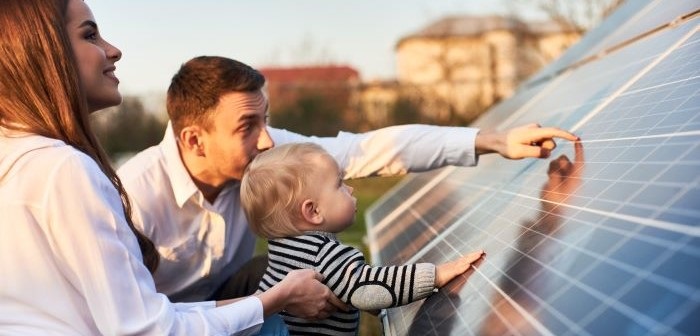Renewable Energy

Purchasing Renewable Energy
In 2017, we joined 17 other councils in a landmark initiative facilitated by the Southern Sydney Regional Organisation of Council’s (SSROC) to reduce carbon emissions, the cost of electricity and gas and support investment in the NSW renewable energy industry.
In July 2019, we began purchasing 20% of our entire energy consumption from Moree Solar Farm, in July 2022, we increased our supply of renewable electricity to 70%, supplied two additional NSW solar farms in Hillston and Nevertire, as well as Moree and in July 2025 we increased our supply of renewable electricity to 100%.
Our Solar Installations
As well as purchasing off-site generated renewable electricity, we also produce a significant amount of on-site renewable power via our large portfolio of roof top solar panels installed across 18 different Council facilities.
Some of our larger facilities that have solar installations include:
- Civic Centre 99kW
- HJ Daly Library 99kW
- Eagle Vale Central 99kW
- Greg Percival Library 99kW
- Minto Works Depot 60kW
- Wombat Willows ELC 26kW
- Minto ELC 26kW
- Eagles Nest ELC 20kW
- Amber Cottage ELC 20kW
- Kabbarli ELC 20kW
- Namut ELC 15kW
Combined, our large roof top solar network can currently provide an annual projected generation of over 740,000 kWh of renewable electricity from more than 2,000 solar panels, which helps lower our electricity bills, increase our energy resilience and places us on a great trajectory towards transitioning to a more sustainable future.
Community Batteries
Solar and other renewable energy sources have changed the way we produce and consume energy. As renewables become even more dominant in our electricity production, battery storage is the next step to maximising the benefits.
Community batteries allow:
- Households with solar to store excess generated energy for later use or to sell to others
- Households without solar to access stored green energy at a reduced rate compared to the grid retailer, providing them with cost savings while also reducing their carbon emissions.
We are currently exploring several opportunities to establish community batteries to store excess green energy for use when energy demand is high and reduce the need for non-renewable power generation in our electricity network.
In partnership with Landcom and Sourced Energy we wrote a guide to help councils make energy sharing communities possible, read it here, and watch the below video to get a better understanding of how community batteries work.